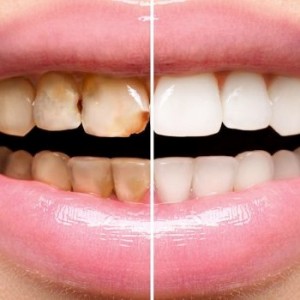
Zirconia crowns and self-adhesive resin cements: evaluation of success after 5 years
Lara Figini
Computer-aided design (CAD) and computer-aided manufacturing (CAM) technology has led to a massive increase in the production of zirconium crowns. Numerous clinical studies have demonstrated the reliability of zirconium with high survival and success rates. Zirconia crowns can be cemented with conventional methods or with adhesive systems. Currently, self-adhesive resin cement is the most frequently used to cement zirconium crowns thanks to its simplicity and the presence of 10-methacryloyloxysidecyl dihydrogen phosphate (MDP) which allows the development of an effective bond between the MDP acid group and the resin layer. zirconium oxide.
Materials and methods
In a retrospective study, published in the Journal of Oral Rehabilitation, the authors evaluated the clinical performance, survival rates, success and complications experienced with zirconium crowns cemented with two different self-adhesive resin cements. A total of 112 patients received 176 monolithic zirconium crowns. The crowns were cemented with two different self-adhesive resin cements: RelyX Unicem 2 (n = 74) and Panavia SA (n = 102).
Clinical evaluations of the crowns and supporting periodontal structures were performed. Intra-oral photographs and periapical and bitewing radiographs were obtained for further evaluation by two examiners. Descriptive statistical analysis, McNemar test, t-test, Mantel-Cox test and Kaplan-Meier survival analysis (a = .05) were performed.
Results
The 5-year survival and success rates were 100% and 96.4%, respectively. The complications encountered were recurrent caries (2.2%) and the need for endodontic treatment (0.5%). No technical complications, such as fractures or loss of retention, were observed. Cement type and patient factors did not influence crown survival and success rates.
Conclusions
From the data of this study, which must be confirmed in other similar works, it can be concluded that the 5-year survival rate of zirconia crowns cemented with self-adhesive composite cements is excellent.
Source: https://onlinelibrary.wiley.com/doi/10.1111/joor.13580
 Related articles
Related articles
Kuraray Noritake Dental Inc., a global leader in dental material innovation, today launched KATANA Zirconia ONE For IMPLANT at Dentsply Sirona World (DS World).
Products 22 September 2025
Roland DGA has introduced the ZDB-150D-US 3.0 mm roughing tool, developed specifically for full-arch zirconia applications.
This systematic review aimed to provide an overview of zirconia implants as well as regarding the outcome of the implant-restorative complex in preclinical studies.
Products 01 September 2025
Dentsply Sirona Releases Innovative CAD/CAM Zirconia Block and Abutment Resin Cement
The CEREC Cercon 4D Multidimensional Zirconia Abutment Block combines high strength with aesthetics for both hybrid abutments and hybrid abutment crowns.
Rocky diamond bur is engineered to help dentists stay in control when the case is tedious and time is tight
 Read more
Read more
Much like EMTs rushing to the scene after an accident, stem cells hurry to the site of a skull fracture to start mending the damage. A new finding has uncovered the signaling mechanism that triggers...
Products 05 November 2025
SimplyTest has launched a groundbreaking saliva-based test to detect high-risk strains of oral human papillomavirus (HPV), a major cause of oropharyngeal cancers.
News 05 November 2025
Perimetrics, Inc., a dental technology company pioneering quantitative diagnostics, announced today that the U.S. Food and Drug Administration (FDA) has granted clearance for the InnerView...
News 05 November 2025
On October 15, open enrollment for Medicare began nationwide. Hundreds of thousands of seniors in New Jersey will once again face the challenge of finding the right Medicare coverage, including the...
Digital Dentistry 04 November 2025
Digitalisation is an expanding field in dentistry and implementation of digital teaching methods in dental education is an essential part of modern education.















